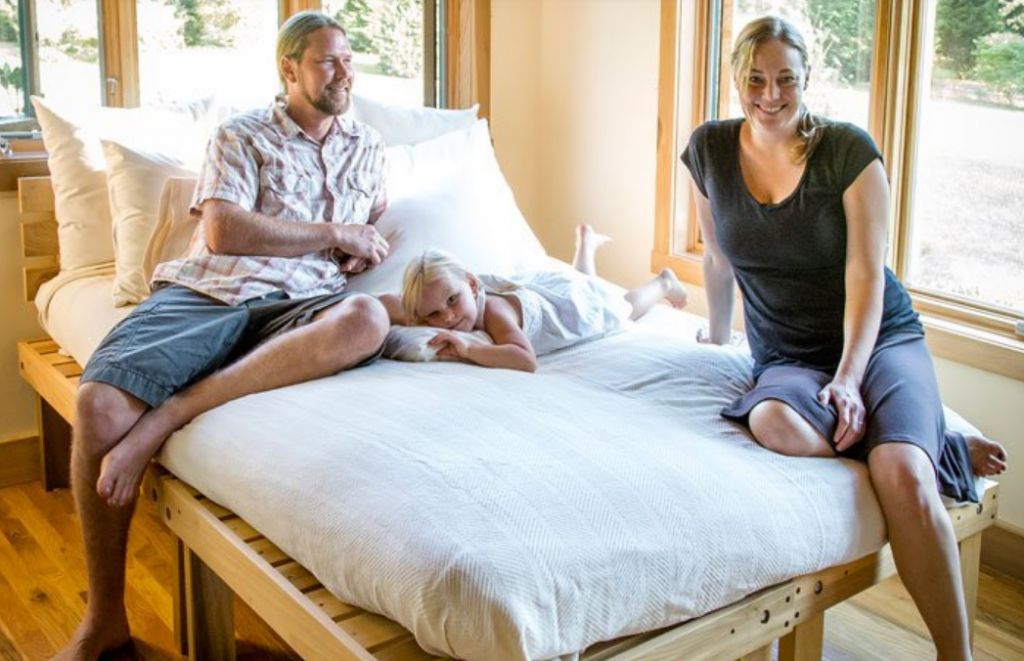For thousands of years humans have slept on minimal surfaces without mattresses. In only a few decades of corporate propaganda and advertising people have come to think of sleep and mattresses as practically synonymous. However what we don’t know is mattresses are robbing us of the deep sleep which we would more easily find with a more simple and primal sleep environment and surface.
I believe the reason mattresses have become ubiquitous is mainly due to these reasons:
1–The perceived comfort is an adaptive response. The body becomes ‘front-loaded’ due to facters such as chair sitting and mattresses. When the body stretches and lengthens on a firm surface, those tight muscles and ligaments are stretched and noticed, causing discomfort.
2–The psychosomatic aspect of a mattress: It looks thick and plush, therefore it MUST be comfortable.
3–Since mattresses have been around for so long, no-one even questions their usefulness. Therefore no studies are performed.
4–The propaganda of a century of advertising.
Sleeping on a Firm or Hard Surface Benefits and Techniques.
Relaxation response and deeper sleeping created by synergy of all these factors.
1–Alignment (natural kickback mechanism of breathing action against sleep surface which re-aligns the body as you sleep)
2–Increased Breathing Capacity and Oxygenation of Blood
3–Increased circulation.
Check out the Primal Sleep Systems designed by the author here.
Three techniques for adapting the Firm Sleeping Lifestyle:
1–Bodywork Remediation
2–Body awareness and ability to relax all muscles evenly against the surface so no pressure points are felt.
3–Propping and positioning the body in ways unique to this kind of surface.
After a lifetime of mattress use you are probably going to feel uncomfortable when you first start sleeping on a firm or hard surface. And what is meant by a ‘hard’ surface?
I have personally tested various beds, futons, and natural surfaces over several decades and have come to the conclusion that what mattress manufacturers call ‘firm’ or ‘hard’ does not even come close to the traditional Japanese futon. What describes this quality best is a thick quilt on a floor or board. That bit of padding (about one to two inches of compressed padding) won’t let the hips sink in to mis-align the spine, yet it buffers the body somewhat. From my own experimenting and interviewing people, I have come to the conclusion that this amount of firmness is what works for most Americans who are changing their lifestyle and sleeping habits.
You will need to experiment for yourself to see what works. You can start with napping and later try sleeping this way. It may take more than one night to get used to it. You can gradually go to a harder surface and compare the results. The interesting thing I have found upon informally interviewing people who have tried sleeping on firm surfaces is that they complain about it being hard and less comfortable, and yet they sleep very well and feel refreshed upon awakening.
You can sleep on a ‘platform bed’ or the floor. A ‘platform bed” is a simple raised surface where your mat goes, but does not have a true mattress. The platform bed is best for those who don’t want to get down to the floor level. It’s disadvantage is it can’t be put away during the day.
The Japanese use a tatami mat under the futon. This provides ventilation underneath which helps regulate body temperature as well as keep the futon from becoming damp with the body’s persperation. It also keeps the futon, blanets, and pillows off the floor which might be dirty and drafty. This is a great invention, but is expensive and doesn’t always fit in with a person’s interior design. A simple tatami mat imitation can be easily handmade from lumber. All that is needed is a slatted surface raised a few inches off the floor. Or the platform bed can serve as a tatami mat if it has a slatted surface

